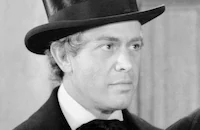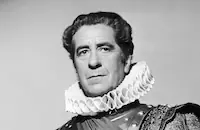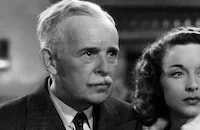Whipsaw

Brief Synopsis
Cast & Crew
Sam Wood
Myrna Loy
Spencer Tracy
Harvey Stephens
William Harrigan
Clay Clement
Film Details
Technical Specs

Synopsis
In London, jewel collector Wadsworth purchases the famous Koronoff pearls for a sum of $500,000 from Monetta, who immediately assigns three bodyguards to escort Wadsworth and the uninsured jewels back to America. Despite the security, the pearls are stolen from Wadsworth by the Dexter mob amid the din of reporters covering the jewel sale at the New York customs office. Racketeer Ed Dexter and his accomplice, Harry Ames, are aided by the pretty Vivian Palmer, who is soon suspected of the theft when Chief Hughes of the Department of Justice links her to Wadsworth's minor automobile accident in Paris shortly before the theft. Assigned by Hughes to investigate the case, G-man Ross McBride poses as a fellow thug in order to win Palmer's confidence and infiltrate the mob. Hoping that she will lead him to Dexter, McBride stages a fake bust with another detective, who, for the benefit of Palmer, accuses McBride of being involved in the much-publicized jewel heist. McBride knocks the detective unconscious and uses the incident to convince Palmer that they must flee before the police come after them. McBride then drives Palmer to Kansas City. En route, Palmer and McBride realize that they are being followed, so they try to lose the men by driving to St. Louis instead. Meanwhile, rival mob leader "Doc" Evans and his man Steve Arnold, also after the Koronoff pearls, tail Palmer, hoping she will lead them to Dexter. Palmer, who does not know that Dexter has hidden the Koronoff pearls in the handle of her mirror, calls him and tells him that she has known McBride's true identity and his motives all along, but is willing to play along with his scheme in order to use him to keep Evans' men from approaching her. She also tells Dexter that she wants to go straight and part ways with the mob after splitting the take on the Koronoff job. Evans and Arnold trace Palmer's call to New Orleans, but they go there only to find that the jewels are with Palmer. Later, McBride and Palmer flee from St. Louis by car and find themselves stranded in a storm, forced to take refuge in the home of Will Dabson and his wife. When Mrs. Dabson goes into labor, McBride volunteers to brave the storm to fetch Dr. Williams. The doctor arrives in time for the delivery, and with the help of Palmer, who acts as midwife, they deliver twins. McBride and Palmer soon develop a romantic interest in one another and spend the night at the Dabsons. During the night, Palmer sneaks out to call Dexter and tell him that she is through with the racket and wants out. After McBride eavesdrops on Palmer's conversation, he reveals that he is a federal agent, and Palmer admits that she has known that all along. McBride, realizing that he has been "whipsawed" and softened by Palmer, calls his office to report that he is arresting her, but then tries to find a way out for her. When he kisses her, Palmer's mirror shatters, and the missing pearls fall out. Palmer tells McBride that she did not know the pearls were hidden in the mirror, but he does not believe her and insists on going through with the arrest. The next day, Evans and the Dexter mob show up, and Palmer, trying to protect McBride, lies and tells them that he is her husband. Palmer and McBride are given permission to leave, but the two only get as far as a diner when a shootout ensues. Following the gun battle, Palmer is jailed. She is released, though, when the police chief learns that she was used by the Dexter mob and Ames. McBride, who offered himself as a witness, turns in his shield for her, and they kiss.

Director

Sam Wood
Cast

Myrna Loy

Spencer Tracy

Harvey Stephens
William Harrigan

Clay Clement
Robert Gleckler

Robert Warwick
George Renavent
Paul Stanton
Wade Boteler
Don Rowan

John Qualen
Irene Franklin
Lillian Leighton
J. Anthony Hughes
William Ingersoll

Charles Irwin
Edward Peil Sr.
Frank De Voe

Lee Phelps
Bert Moorhouse
Jack Mack
George Guhl
Carl Stockdale
Lillian Harmer
John Marston
John Kelly
Arthur Loft
William Pawley
John Sheehan
Robin Adair
Frances Gregg

Howard C. Hickman
William Wagner
Wallis Clark
Charles Coleman
Cyril Mclaglen
Pat Flaherty

Halliwell Hobbes
Crew
Dr. William Axt
Cedric Gibbons
James Edward Grant
William A. Horning
James Wong Howe
Harry Rapf
Howard Emmett Rogers
Douglas Shearer
Dolly Tree
Edwin B. Willis
Edward Woehler
Sam Wood
Basil Wrangell

Film Details
Technical Specs

Articles
Whipsaw
By Richard Harland Smith

Whipsaw
Quotes
Trivia
MGM executive E.J. Mannix chastised photographer 'Howe, James Wong' for filming Myrna Loy with mussy hair when she awakens at John Qualen's house, since MGM spent millions glamorizing their star. The scene is in the Turner library print.
Notes
The working title of this film was Unexpected Bride. According to Hollywood Reporter news items, the film was originally intended as a William Powell vehicle, but because Powell was unavailable at the time, the studio cast Spencer Tracy. Hollywood Reporter production charts and pre-release news items list actors Lee Shumway, Thomas Jackson and Charles Trowbridge in the cast, but their appearance in the released film has not been determined. According to modern sources, M-G-M production executive Eddie Mannix, after viewing rushes from a scene in which Myrna Loy awakens from a sleepless night, upraided photographer James Wong Howe for filming her with unkempt hair and for "unglamorizing a star M-G-M had spent a fortune to glamorize." A November 25, 1935 Hollywood Reporter news item notes that following a preview showing of the film, M-G-M sent the picture back into production for new scenes. Modern sources indicate that this was Loy's first film since her much publicized salary strike. Previously, Loy, who complained that her salary had not been raised in two years and that she was being exploited, refused to make another picture until her salary demands were met.















